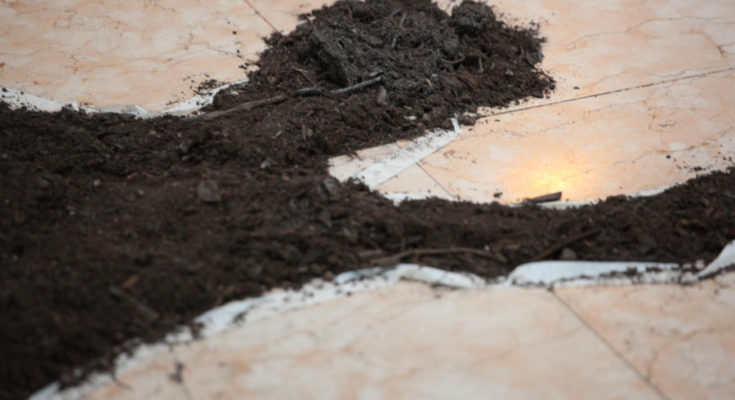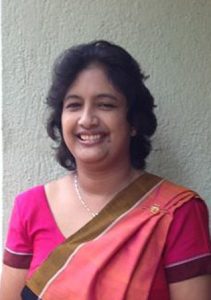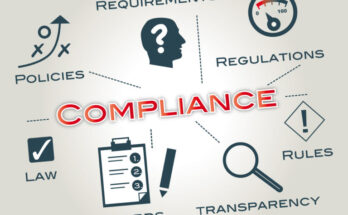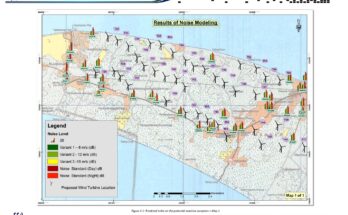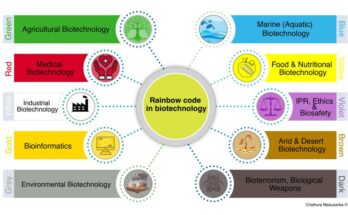By Dr. Meththika Vithanage
Ecosphere Resilience Research Center, University of Sri Jayewardenepura, Nugegoda, Sri Lanka
Soil makes up the outer most layer of the Earth which really is a life-giver; provides nutrients, water and minerals to plants and trees, and is home to millions of insects, microorganisms, recycle matter and filter and store water. More than 95% of the food produced in the world is from the land, from soils and healthy soils produce healthy food for the population. However, the Status of the World’s Soil Resources Report (SWSR) in 2015 has identified soil pollution as one of the key threats to the global soils. It is true that the soil pollution is a hidden enemy and an even more concealed reality as it cannot be directly assessed or visually perceived. Main pollutants in soils can be inorganic or organic in origin including metals/mettaloids (cadmium, lead, copper, arsenic) and non metals (ammonium, nitrate, sulfur), pesticides, antibiotics, persistent organic compounds, poly aromatic hydrocarbons, radionuclides and pathogenic microorganisms Most of the soil pollution at the time when it has been identified as a problem, it becomes already delayed and costs tremendously for its restoration. Based on scientific evidence, soil pollution, which occurs from a wide range of sources, can severely degrade the major ecosystem services provided by soil. Point source pollution occurs where intensive agricultural and industrial activities, inadequate solid, liquid and hazardous waste disposal, unbalanced or excessive organic and mineral fertilizer and pesticide applications, mining, military activities, or accidents introduce excessive amounts of pollutants to the local soil pool. Diffuse or non-point source soil pollution, on the other hand, is the presence of a substance or agent in the soil that is emitted from moving liquid or gaseous sources, covering a large area, or from multiple sources. The three major pathways responsible for the diffused pollutants are atmospheric deposition, agricultural inputs and flood events.
Soil pollution has a direct impact on food security in different ways. Some pollutants are taken up by plants through different pathways, they accumulate in the food chain, compromising the safety of the food consumed by both humans and animals whereas soil pollution affects food availability by reducing crop yields due to toxic levels of pollutants that hamper crop growth and reduce soil biodiversity. Moreover, soil-borne human and animal health problems are in recent interests. Those health issues can be induced directly (vegetables and fruits) and indirectly (animal pathway) entering the food chain, further affecting the ingestion of pathogenic organisms, ingestion of nutrient-deficient crops contributing to malnutrition, undernutrition and food insecurity, , and thereby contaminating water through soil leaching. Therefore, awareness on soil pollution is increasing around the world and many organizations have implemented action plans to combat with it. Now, with the Sustainable Development Goals (SDGs), soil has been received serious attention since soil cater to many SDGs; the reduction of soil pollution and the restoration of polluted sites can contribute to achieving food security (SDG 2), increasing the provision of clean water (SDG 3 and 6), sustainable consumption and production (SDG 12), strengthening resilience and adaptive capacity to climate related hazards and natural disasters (SDG 13), preventing marine pollution from land-based activities, combating desertification, achieving a land degradation neutral world, and halting biodiversity loss (SDG 15), and it is related to technology development and land use and urban planning (SDG 9 and 11).
Due to the increased awareness and discussions held in different scientific platforms on soil pollution and related issues, the United Nations Environmental Assembly (UNEA-3, 2017) has adopted a resolution in which decisions were called for accelerated actions and collaboration to address and manage soil pollution. The resolution commits to increase the research and development, targeting pollution through tailored actions, moving societies towards sustainable lifestyles based on a circular economy, strengthening and enforcing laws on soil pollution. Moving towards to create a pollution free world, the UN Food and Agriculture Organization (UN FAO) and its Global Soil Partnership (GSP), Intergovernmental Technical Panel on Soils (ITPS), together with the Secretariats of the Basel, Rotterdam and Stockholm Conventions, UN Environment and World Health Organization (WHO) has jointly organized the Global Symposium on Soil Pollution (GSOP) as a neutral platform to bring the best scientific information available in the world, its status, trends and actions (both scientific and political) on soil pollution. This was taken place in the UN FAO from 2-4th May, 2018 in Rome, Italy. It is the first step in implementing the Voluntary Guidelines for Sustainable Soil Management in terms of preventing and reducing harmful substances in soils as a way to maintain healthy soils and food safety in accordance with the SDGs.
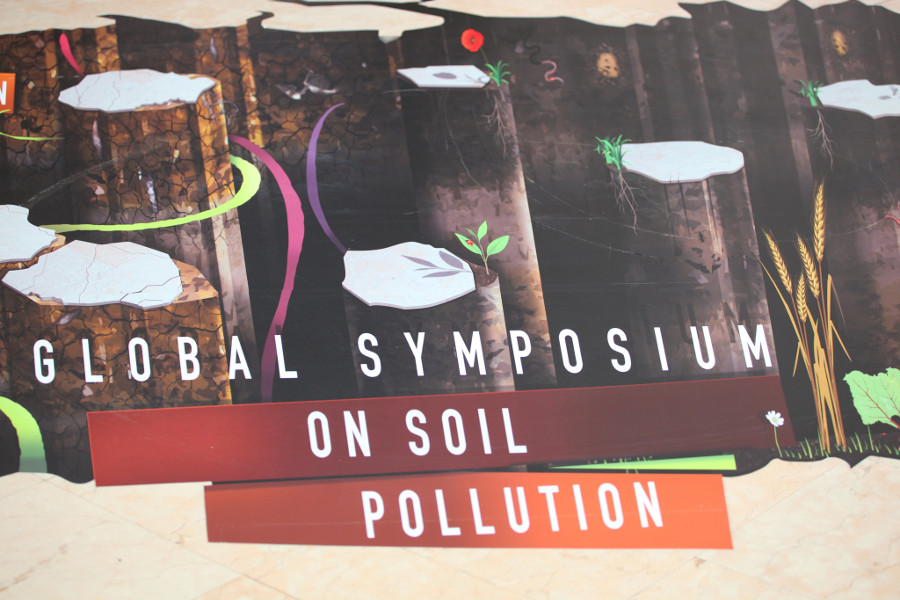
The first ever GSOP was attended with more than 522 scientists and policy makers worldwide covering almost all the inhabited continents from 100 countries. Attendees were from FAO member states, UN Environment, Basel, Rotterdam and Stockholm Conventions and WHO country parties, presenters whose abstracts are accepted and scientists and practitioners working in related fields, representatives from NGOS, civil society and land users. Additionally, the symposium paid attention on the private sector working on agricultural inputs production and distribution, pollutant management, and technology development for measuring and controlling soil pollution, and restoring polluted sites as well.
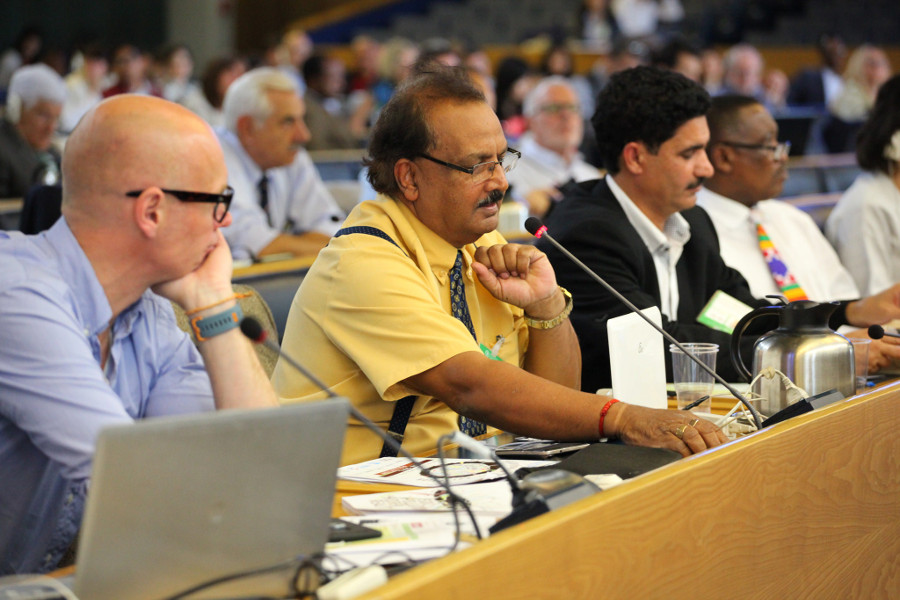
Key note addresses from Prof. Ravi Naidu, University of Newcastle, Australia, Prof. Steve McGrath, Rothemsted Research, UK, Prof. Esperanza Lwanga, El Colegio de la Frotera, Mexico, Prof. Ronal Weber, Germany and Prof. Lena Ma, University of Florida, USA were based on the four themes identified by the UN FAO namely;
Theme 1: Soil pollution on agriculture fields and other land uses
Theme 2: The impact of soil pollution on food production and safety, the environment and overall human well-being
Theme 3: Remediation of polluted sites
Theme 4: Global status of soil pollution
Under the first theme, presenters introduced the drivers of soil pollution both in the agri fields as well as in other land uses. Other than the direct application of mineral and organic fertilizers into soils, many countries apply wastewater, manure etc to land and the processes related to fate and transport of these pollutants were discussed in detail. The economics of soil degradation, mismanagement of agrochemicals, changes in soil quality in terms of physical, chemical and biological base were overviewed.

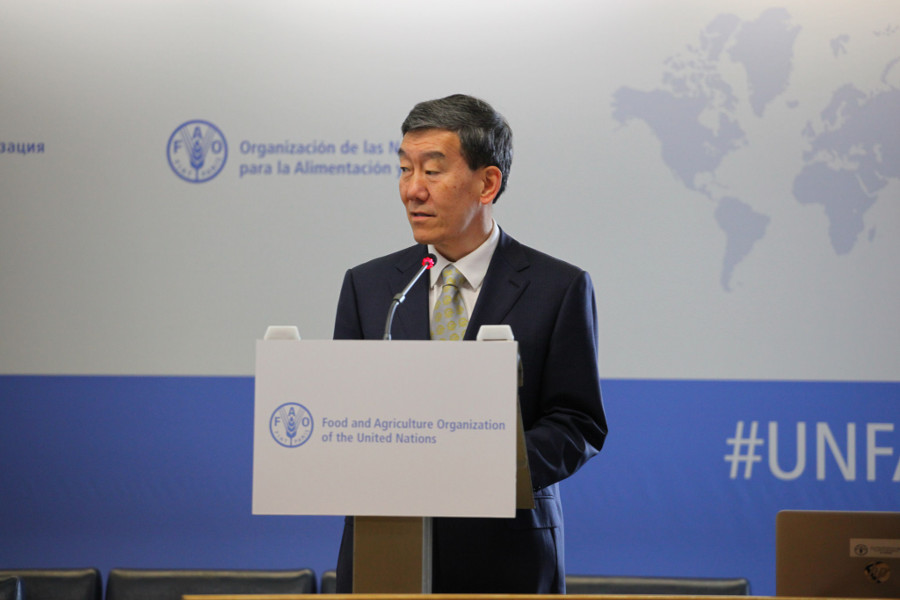
Second theme focused the attention mainly on food security and ecosystem and human health risks. Susceptibility and variability of plants to pollutant uptake for heavy metals and persistent organic compounds were elaborated. Wastewater induced antibiotic resistant microbes in soil gained lot of attention. Further discussions were held on the solubility, mobility and bioavailability of pollutants, which depends on many parameters such as soil pH, organic carbon, nutrients, minerals present, water content etc.
Scientific evidences were showcased with regard to the actions taken to restore such contaminated sites and lessons learned from the difficulties were elaborated. Detailed discussions were further held on different techniques to be used in contaminated site remediation and restoration. Interesting dialogues took place regarding the cost of remediation of such sites with regard to the developing nations. Different cost effective techniques were introduced by African and Asian continents to combat the difficulties of high-tech remediation options. The panel discussion reviewed the limitations related to mapping soil pollution specifically in terms of tools available, use of bio-indicators etc. Discussions were held to understand the status and difficulties of developing nations and it was stressed the need of the same technique to be used throughout the world in order to assess and mapping the soil pollution. It was understood that there is no facilities to monitor soil pollution for emerging contaminants in the developing nations. At the same time, the state of the art remediation techniques for contaminated sites were reviewed however, it was understood that in some cases site specific and integrated techniques are indeed important. It was further highlighted that there is no baseline of soil pollution at the global level and it is rather local or national. Though there are agreed protocols for assessing, mapping and monitoring, for some countries those techniques are not feasible.
Global status of soil pollution was discussed in the Theme 4 specially focusing the policy matters and thresholds for soil pollution with case studies at global, national and regional levels. The gaps in existing international legal instruments and frameworks were noted. The need of setting world agreed thresholds for different contaminates were discussed and agreed upon. It was considered as an important part of the policy development while the criteria for thresholds were identified. The symposium presenters examined the current status of soil pollution in developing and developed nations and discussed its effect on food production, safety and the risks associated with human and environmental health. Knowledge gaps were identified with regard to the global status of soil pollution.
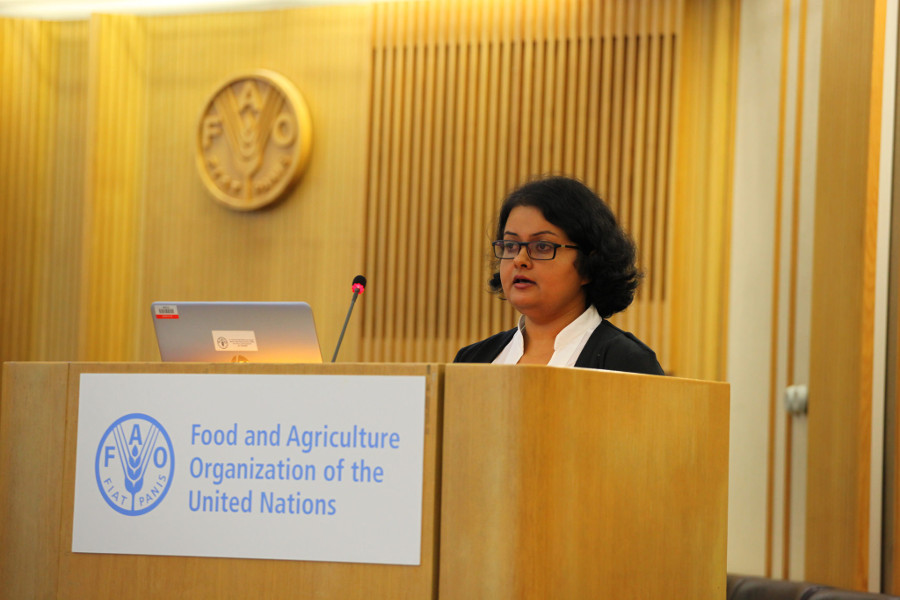
Sri Lanka represented the UN FAO Global Symposium on Soil Pollution to present the scientific evidences on Antimicrobial Resistant (AMR) bacteria in Sri Lankan agricultural soils and the associated risks and to showcase the possible amendments to be used to recuperation of saline soils. The presentation by Dr. Warshi Dandeniya, Head of the Department (Soil Science), Faculty of Agriculture, University of Peradeniya was well received by the audience. The animal manure is applied as an organic fertilizer in Sri Lankan vegetable fields contains residual concentrations of antimicrobial agents and AMR bacteria which may pose a risk to the human health was gained a lot of attention of the audience. The study on compost, sludge and biochar use in saline soils by Dr. Meththika Vithanage, Faculty of Applied Science, University of Sri Jayewardenepura exhibited the potential integration of organic amendments as a possible material for restoration of saline soil instead of using inorganic minerals. Since saline soils are now being increasing in its extent due to irrigation, climate change etc the presentation was also gained interest by many parties. The two Sri Lankan presenters were supported by the UN FAO, National Science Foundation and the Ministry of Science, Technology and Research in Sri Lanka.
During the symposium, UN FAO released the book Soil pollution: A hidden reality to the audience. Natalia R. Eugenio, FAO, Prof. Michael MsLaughlin, University of Adelaide, Australia and Prof. Daniel Pennock, University of Saskatchewan, Canada served as the honorable authors of this book. This particular book identifies the main gaps in knowledge on soil pollution worldwide and serves as a basis for future discussions. It summarizes the state of the art of soil pollution, identify main pollutants, sources and risks to human and environmental health paying special attention to those that are present in agricultural systems. Further, it discusses the pathways and mechanisms of reaching pollutants into the food chain. It concludes with case studies of the best available techniques for assessing and re-mediating contaminated soils. Symposium concluded with suggestions to make solutions to global soil pollution via taking necessary actions to promote sustainable agricultural practices by requesting the governments to make policies to prevent and control soil pollution, managing antibiotic waste in proper manner protecting soil bacteria from developing antimicrobial resistance, reduce negative effects from radioactive, hazardous and municipal waste disposal.
About the Author
Dr. Meththika Vithanage
Ecosphere Resilience Research Center,
University of Sri Jayewardenepura,
Nugegoda, Sri Lanka

